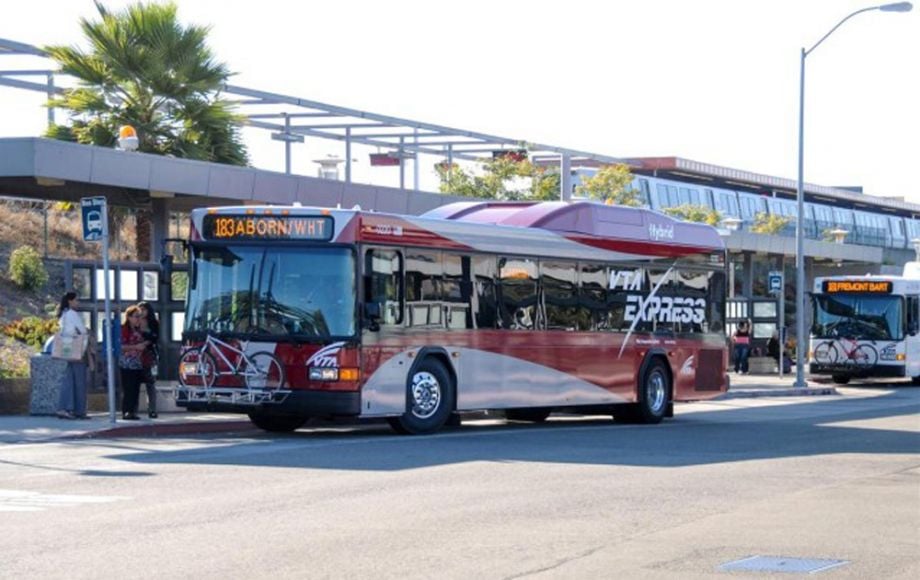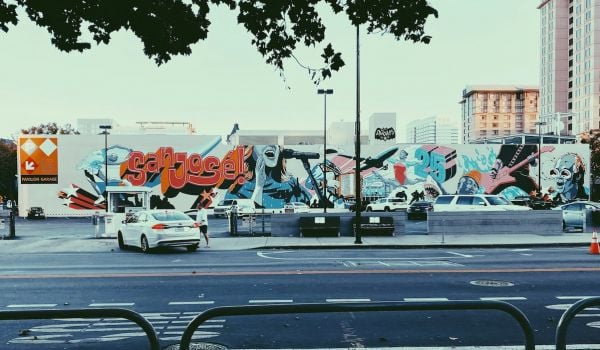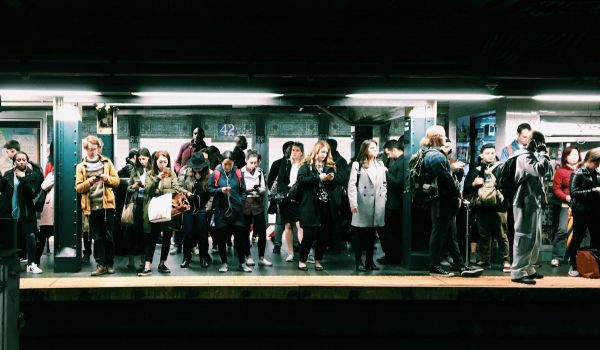In the capital of high-tech a lowly bus purrs along, unappreciated except by those who want to transport people cleanly and for less money.
Growing up in a region defined by cutting-edge transportation achievements of the past two centuries — the clipper ship, San Francisco’s cable cars, the Golden Gate Bridge, the far-flung Bay Area Rapid Transit system and possibly California’s high-speed rail system — it’s understandable that Bill Capps has always been fascinated by different ways to move people about.
Harder to understand is why he’s focused on the city bus in San Jose, at the center of Silicon Valley. What’s so special about a transit mode so seemingly ordinary?
When Capps watches one of the Santa Clara Valley Transportation Authority’s 90 new computer-packed hybrid buses cruise silently, almost smokelessly, out of the bus yard, he knows it’s no ordinary bus. It will take a long time before the vehicle, which alternates between diesel and electric power, returns for fuel — in this case, 25 percent longer than the diesel bus it replaced.
“We use a lot of fuel around here,” Capps said. Speaking from 34 years’ experience at what most riders call the VTA, he knows better than most.
Capps began his career in transportation as a student at San Jose State University, when he was behind the wheel of a much less efficient bus. If he were still driving, some features about the hybrids might appeal to him — for instance, an electric steering system that takes the muscle out of maneuvering around sharp corners, a task that required significant strength in the old hydraulic systems. Today’s passengers, especially the elderly and disabled, like the new buses’ low floors, which eliminate troublesome steps.
But when your ID badge no longer reads “Your Driver is…” and now says “Operations Director,” it’s the plummeting monthly fuel tab that lifts the corners of your mouth. VTA’s most recent sustainability report noted the hybrids were a significant contributor to the system’s 17 percent reduction in diesel fuel consumption since 2007.
VTA’s buses carry nearly 5.5 million passengers a year, and the hybrids are no less a technological marvel than the Bay Area’s iconic bridges and cable cars when they opened. And they get built in Hayward, just a few miles up the 880 freeway from San Jose, by Gillig LLC, the last entirely U.S.-owned bus builder.
Originally founded as a horse-drawn carriage maker in San Francisco, Gillig’s first factory burned down in the 1906 earthquake and relocated to the East Bay, where it built some of the nation’s earliest motor-powered buses. Its 700 employees today earn an average of $40 an hour in salary and benefits.
As a follow-up order to the 40-foot Gillig hybrids, VTA just ordered 35 more, plus 29 hybrids from Canada’s New Flyer of America, for delivery by 2015. These buses are 60 feet long, bend in the middle — “articulated” is the technical term — and will be used on VTA’s bus rapid transit corridor along El Camino Real, Silicon Valley’s main north-south surface street corridor. There are also planned corridors between Santa Clara and Alum Rock, as well as along Stevens Creek Boulevard.
When in service, hybrids will make up more than a quarter of VTA’s 426-bus fleet and operate similarly to a Toyota Prius automobile. The buses run on electric power until one of 11 computers senses a need to switch to the diesel engine for propulsion and battery charging. When the driver slows for a stop, the electric motor becomes a generator, helping slow the bus and saving brake wear while simultaneously recharging the roof-mounted batteries.
“I was at VTA when buses switched from two-cycle to four-cycle diesels, when we became ADA compliant, and when we went to air conditioning,” said Art Douwes, the system’s operations manager for maintenance engineering. “But no technological improvement has been bigger than this.”
The hybrids, which arrived in 2010 to replace diesel buses from 1997, produce 96 percent less smog-creating nitrogen oxides and 90 percent less particulate matter — otherwise known as smoke — than their predecessors.
The Gillig hybrids were purchased with $53.4 million in stimulus funds and $5.3 million from California’s Proposition 1B, a 2006 voter-approved act to fund highway safety, traffic reduction and air quality improvement projects. The New Flyer buses cost $32.9 million, also funded by Prop 1B as well as Measure A, a Santa Clara County ballot initiative earmarked for public transit capital improvements.
“Our goal is to go completely green-energy as funding is available,” said Brandi Childress, VTA’s spokesperson. “We have future clean-energy bus procurements in the pipeline later on this year to replace some of our 35-foot community buses and more 40-footers.”
In San Jose, what look like ordinary buses may never be as alluring as Silicon Valley’s latest gadget. But thanks to local ingenuity and determination, these vehicles are doing extraordinary things, both for the environment and the taxpayer.
Working Partnerships USA is a grantee of the Surdna Foundation.
The Works is made possible with the support of the Surdna Foundation.

















